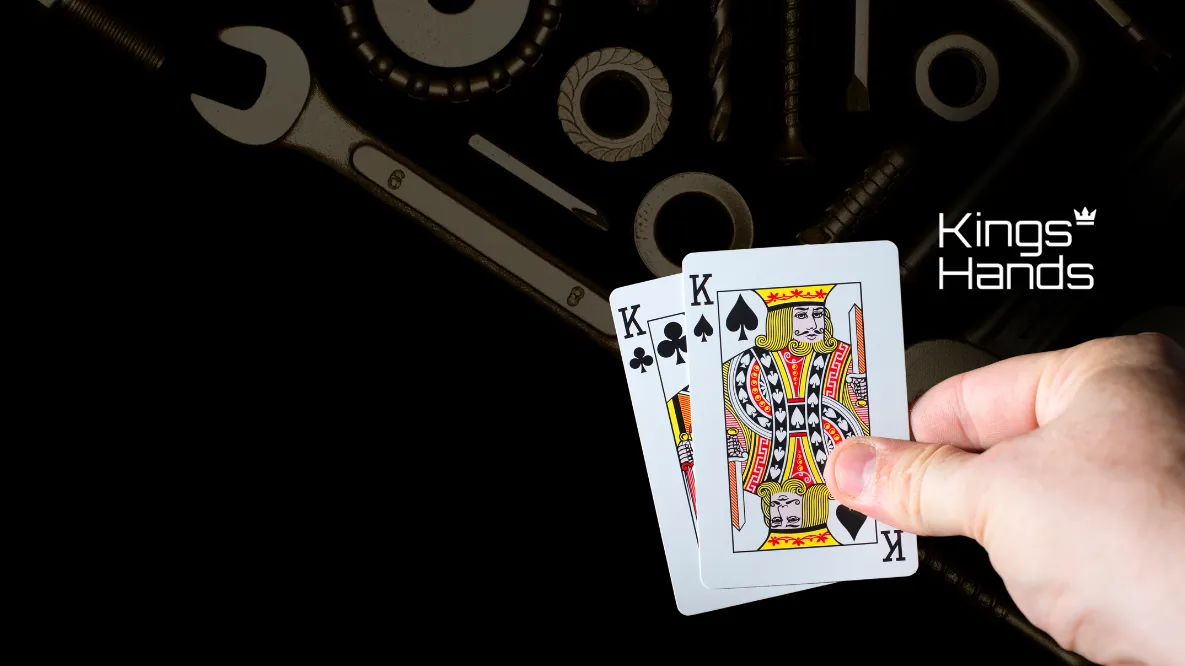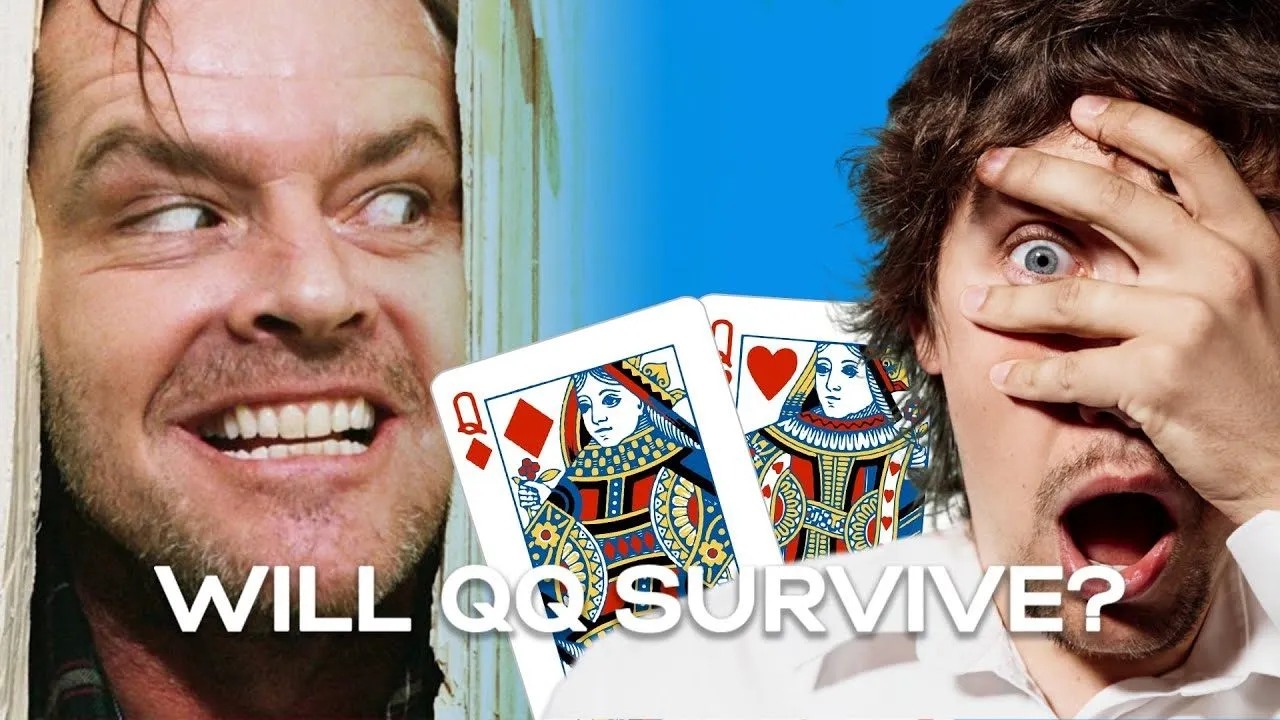One of the things we look for when searching for poker tells is uncontrollable bodily reactions to stress. These reactions are extremely hard to fake, which means if you can spot one from your opponents, you can be certain that you’ve got yourself a tell. Reactions such as these are commonly found when looking at an opponent’s neck and chest, so being able to identify these tells can be extremely beneficial.
In part four of our Poker Tells series, we’ll be looking at the most common poker tells you can spot by looking at your opponent’s neck and chest. As always, we’ll be helping you adjust your game based on these tells, so keep reading if you want to effectively use poker tells to crush your games.
Check For a Pulse…
One of the most common tells you’ll see in poker movies/TV shows is the sight of a neck pulsing at a hundred miles an hour as they’re trying to pull off a bluff. As someone becomes stressed, their heart rate will increase, and as the blood is pumping around the body at a faster rate, it will cause some veins near the surface of the skin to visibly pulse. One of those veins is in your neck, and if you look closely enough, you can see it pulse as someone’s stress increases.
The most common reason for someone to be stressed during a poker hand is because they’re bluffing. They know that if they’re called, they lose the hand and all the money that goes with it and that stress leads to a heightened heart rate which can be seen through the vein on the neck. However, some people’s heart rates will also dramatically increase when they’re excited, such as when they have a good hand.
This is why it’s important to carefully watch your opponents while they’re in other hands; the more you watch your opponents and the hands they show down, the easier it is to identify what certain tells mean. However, if you’ve just sat down and noticed someone with this tell, a good rule of thumb is to assume it means weakness until proven wrong.
How Do I Counter It?
So, if you spot your opponent’s neck looking like that one scene in Alien, what should you do? Well, the most likely reason you’re seeing this tell is because they have a weaker hand than average, so we can assume that their overall range is weaker than it would usually be in this spot.
The best way to counter a player whose range is weaker than average is to slightly expand your calling range. Just how wide you expand your range will depend on your confidence in the tell, so make sure you know your opponent well before you start hero-ing it off with jack-high. You can also play more aggressively with your draws and your own bluffs, as you know that your opponent is more likely to fold than usual, making aggression more profitable.
Covering their Neck to Hide their Tell
If you’ve ever played a hand of poker and felt your neck pulsing like in the example above, you’ll know just how obvious it feels. Sitting at the table, it feels like your neck is expanding out across half the table, so the obvious instinct when you feel that sensation is to cover it before anyone spots it.
Now, it’s become second nature for many poker players to sit in a prescribed position for the duration of the hand, with many players choosing to sit in a way that covers their necks. Obviously, if someone is sitting in the exact same way every single time, there isn’t much to pick up on. Instead, we’re looking for the players who would otherwise sit openly, that are now deciding to cover their necks halfway through a hand.
Any player that’s trying to do this will try and naturally slide into a position that covers their neck so as not to make it too obvious, so you have to be paying attention to how someone is sitting from the start of the hand. If you see someone who was previously sitting upright adjust their position to cover their neck, there’s a good chance that they’re trying to hide it from you for a reason.
How Do I Counter It?
As we’ve previously discussed, a pulsing neck is often a sign of stress, so if a player is doing their best to try and hide that signal from you, that in itself is a sign of stress. The likelihood is that they’re weak and trying to hide that weakness from you, which means you need to exploit it.
Play back aggressively against their bets and raises, particularly if you have a semi-bluff of your own. You’ll find that if you do, your bets and raises will work much more often, allowing you to win the pot without showdown. You can also expand your calling range if you have a showdownable hand; start with small adjustments and start to expand your range even further as you gain confidence in your read.
Gulp… Gulp… Gulping During a Hand
Just so we’re all on the same page and no one’s mind is where it shouldn’t be – by gulping, we mean the classic movie-style *gulp* that someone makes when they’re stressed or nervous, not any other kind of gulping.
While it may be cliche in TV and movies, it’s a cliche for a reason. Everyone has experienced this phenomenon in one form or another, and it’s a recognised reaction to stress. When your “fight or flight” response is activated, your body produces cortisol, which causes, among other things, your mouth to dry up. This is an uncomfortable sensation for most people, so to relieve it, they gulp.
Therefore, if you see someone at your table make one of these large gulps, there’s a high likelihood that they’re experiencing a high amount of stress.
How Do I Counter It?
As we believe this tell to be a sign of severe stress, it’s likely that anyone who is displaying this tell has a weaker hand than you’d usually expect to see. This means we can adjust our strategy based on our opponent having a weaker overall range. Start by slightly widening your calling range against your opponent and play back slightly more aggressively if you don’t have a showdownable hand. When you become more confident that you’ve picked up a solid tell, you can start to make larger adjustments to exploit your opponents and win more than your fair share of pots.
Touching the Base of Their Neck/Playing With a Necklace
When under stress, it’s common to feel like your airway is restricted or that you’re not getting enough air. This is part of the reason why people’s heart rates and breathing increase; they’re trying to get more oxygen into their bodies to help deal with the stress. We’ve already talked about how people will gulp uncontrollably to help relieve the tension they’re feeling, but another way people do this is by touching the base of the neck or playing with their necklace.
If you’ve ever worn something slightly too tight around your neck, you’ll know how uncomfortable it feels and how you feel compelled to try and rectify the situation. That’s what people are trying to do when they’re giving off this tell; they can feel their airflow restricting, so they’re soothing the base of their neck to try and relieve that stress and breathe normally.
This tell is much easier to spot when your opponent has something around the neck which they can play with, such as a necklace or a tie. However, you will still spot people without these accessories reaching for the base of their neck to try and self-soothe in the same way, so make sure you watch your opponent’s movements carefully throughout the hand.
How Do I Counter It?
If you see someone giving off this tell, it’s a sign that they’re under significant stress, which often means they’re in a weaker position than they would normally be. We can assume that this person has a weaker range than they would on average, which means we can start to expand our calling range against them when they bet and play more aggressively when they check.
Remember, always start off by making small adjustments to your range until you get a read that this is a surefire tell for your opponent.
Rising Chest Indicating Heavy Breathing
Just as an increased heart rate will cause your neck to pulse, it will also increase your breathing rate. The faster your heart beats, the faster you breathe in and out. Depending on how your opponent is sitting at the table, you may be able to see their chest rising and falling as they breathe. This is a great window into the overall stress levels of your opponent at any given time.
The slower and more controlled their breathing looks, the more likely they are to be relaxed. However, if their rate of breathing becomes faster and less controlled, it’s a good sign that they’re stressed about the situation. This is another reason why you need to pay close attention to your opponents as you play, as you may spot someone who you think is stressed based on the speed of their breathing, but that’s just how they breathe all the time!
Establishing a baseline of how your opponents act at the table is key to being able to identify tells such as these. We’re looking for things that deviate from the norm and can signal the strength of your opponent’s hand, but how can you know if something is deviating from the norm if you don’t know what the norm looks like?
How Do I Counter It?
Countering this tell will depend entirely on how your opponent is breathing at the table. The more relaxed and controlled their breathing is, the more relaxed your opponent is likely to be. This means that they likely have a stronger range than usual, so you’ll want to exploit that by folding more often and playing less aggressively against their bets.
However, if you spot your opponent breathing heavily, it’s likely they’re feeling stressed about the situation. This makes it more likely that their range is weaker than usual, so you’ll want to exploit that by calling more often and playing more aggressively against their bets.
Summary
If you want to become a master of picking up tells and reading people at the poker table, being able to spot involuntary tells such as these is essential. Most people in the world cannot control bodily reactions to stress, making these tells universally applicable to the games you play in. If you pay close attention to these particular areas and become skilled at recognising the small movements, you’ll see a marked difference in the quality of your decisions at the table.
Join us in part five of this Poker Tells series, where we’ll be talking all about the hands. Make sure you join our PokerDeals Facebook group or follow us on Instagram to be notified of the next article in the series.
*Image courtesy of PokerGo





















